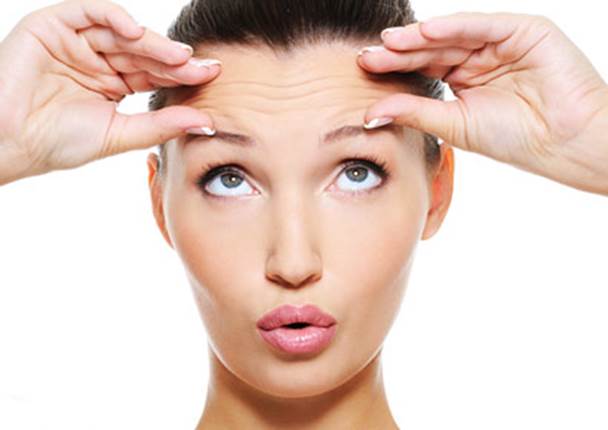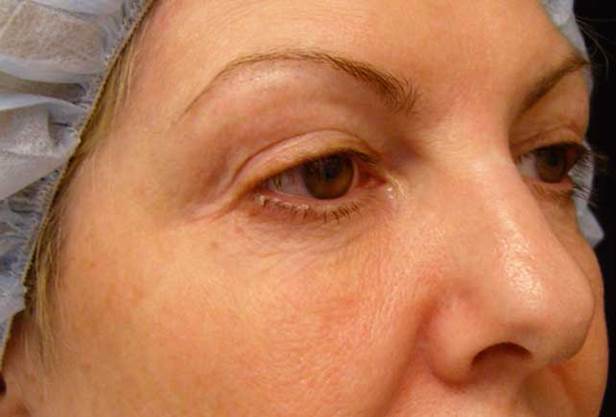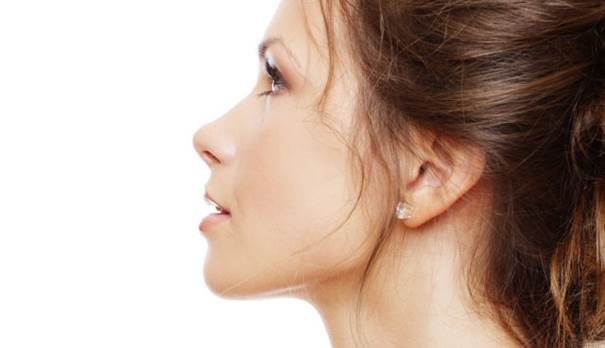
Hooding
in the upper eyelids is more due to natural ageing than genes
The
problem:
Hooding in the upper eyelids is caused by
loose eyelid skin and drooping of the eyebrows. Again, it’s more due to natural
ageing than genes but if you’ve inherited your mother’s facial expressions,
these can have an impact.
“Some people are frowners or eyebrow
raisers and share similar facial expressions. If, like your mother, you’re a
frowner you’ll get heavier lines between your eyebrows. If you’re an eyebrow
raiser, you’ll get heavier horizontal lines across the forehead,” explains
Marcells.
Brow and eyebrow sagging and a loss of skin
elasticity lead to hooding. Eye bags are caused by the breakdown of skin
structure and the loss of elastin which helps skin stay firm. Thin, delicate
skin under the eye is often the first to start sagging, creating bags, but this
isn’t a result of genetics.
The
solution:
Eyelid surgery can remove excess skin and
fat in the upper eyelids and correct bags and sagging under the eyes, says Dr
Marcells. “It may be performed alone but it’s often performed with browlift
surgery,” he says. “This can improve a person’s appearance by five to 10
years.”
Hollowing
The
problem:
Hollowness on the inside of the lower eye,
near the nose, is an early sign of ageing. The eye trough is caused by natural
fat loss. This probably happened to your mum and it’s likely to happen to you,
but it’s not due to genetics. It’s more just part of the natural ageing
process.

Hollowness
on the inside of the lower eye, near the nose, is an early sign of ageing. The
eye trough is caused by natural fat loss.
“It’s natural for fat in the face to
atrophy as we age so you get a loosening of volume. That creates the hollowness
near the eye and also your cheeks won’t be as full,” says Flynn.
The
solution:
You can’t do much about hollowing near the
eye with creams or through changes toy our lifestyle, but you can put volume
back in the area with fillers. Those most commonly used in Australia are
hyaluronic acid fillers – soft tissue fillers.
“The effects last anywhere from four to 18
months so, as with a good haircut, you’ll need to have the treatment done
periodically,” says Flynn.
Jowls

Eating
a high-sugar diet can also speed up the development of slacker jowls and
wrinkles
The
problem:
Loss of elastin and natural springiness in
the skin, combined with the loss of bony support in the face, can lead to
jowls. If you’re inherited a stronger facial structure from your mum or dad,
you’ll weather this process better, says Flynn.
“But if you’re inherited a soft cheekbone,
as you age the tissues sag around it and you lose fat volume. You’ll look more
tired and drawn than someone with naturally high, full cheekbones, even though
the same things have occurred,” he explains.
Eating a high-sugar diet can also speed up
the development of slacker jowls and wrinkles, says Hunt.
“Studies in animals and some parallel
studies on humans have shown people on a low-calorie diet seem to minimize
signs of ageing, and sugar is particularly damaging,” she explains.
“The end products of sugar bind to collagen
and increase its breakdown, so a high-sugar diet does age you and there’s
scientific evidence on that.”
The
solution:
Strengthening or firming the skin structure
by replacing or maintaining collagen and elastin can help. If you’ve stayed out
of the sun and avoided the UVA in sun that breaks down collagen and elastin,
your jowls may be less obvious. Using sunscreen will prevent further skin
damage.
Maintain a healthy weight and avoid eating
too much sugar to reduce eating too much sugar to reduce the impact of its end
products as it breaks down as these can age the skin.
In the US, researchers are looking at skin
creams that work on epigenes (inherited changes to our DNA).
“As we get older the genes for producing
collagen start turning off. Studies are looking at identifying 40 per cent of
the ageing epigenes and, using this information, researchers have created a
range of creams that reverse the gene expression or gene pattern back to what
it was when we were younger,” explains Hunt.
“These products are still in research and
are very new, but that’s the way this area of research is going.”